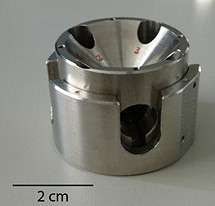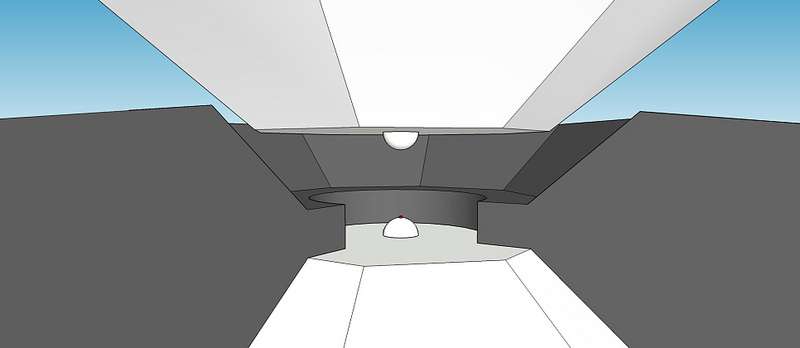Extreme pressure causes osmium to change state of matter

Using metallic osmium (Os) in experimentation, an international group of researchers have demonstrated that ultra-high pressures cause core electrons to interplay, which results in experimentally observed anomalies in the compression behavior of the material.
Os is one of Earth's most exceptional elemental materials, possessing the highest known density at ambient pressure, one of the highest cohesive energies and melting temperatures, and an incompressibility that is almost comparable to that of diamond.
Researchers believe that the ability to affect core electrons – which do not participate in chemical bonding – in metals like osmium will open new opportunities in the search for new states of matter and the synthesis of materials with unique properties that do not exist at ambient conditions.
"The international research team employed extreme conditions that generated a measurable change in osmium's high pressure behavior," said Vitali Prakapenka, a scientist at the University of Chicago's GeoSoilEnviros Center for Advanced Radiation Sources (GSECARS) beamline at the Advanced Photon Source (APS), a U.S. Department of Energy's (DOE) Office of Science User Facility at DOE's Argonne National Laboratory.
"Although the theoretically predicted electronic transition that involves pressure-induced interaction between core (inner) electrons is much weaker than typical structural changes associated with valence (outer) electrons, we were able to detect experimentally changes in properties of this highly-compressed material which are related to the predicted phenomenon," said Leonid Dubrovinsky of the Bayerisches Geoinstitut (BGI) at Bayreuth University in Germany.
"We used micro-anvils made of super hard nano-diamond to generate 770 gigapascals of pressure (more than 7 million of atmospheres, i.e. twice that of the center of the Earth) on the osmium sample," BGI's Natalia Dubrovinskaia said. The device for generating ultra-high static pressures – a two-stage diamond anvil cell – was developed by Dubrovinsky and Dubrovinskaia, who published this research technique in 2012.

"Measuring the effect of ultra-high pressure required very accurate structural X-ray diffraction experiments to reveal the anomalous behavior of the lattice parameters upon compression," Prakapenka said. "We used state-of-the-art synchrotron techniques capable of penetrating bulky pressure vessels to probe tiny samples with a typical size of around 1-4 microns. We have used a very intense tightly focused high-energy X-ray beam that is only available at third-generation synchrotron facilities."
The research is detailed in the paper "The most incompressible metal osmium at static pressure above 750 gigapascals," published in Nature.
More information: Nature 525, 226–229 (10 September 2015) DOI: 10.1038/nature14681
Journal information: Nature
Provided by Argonne National Laboratory




















